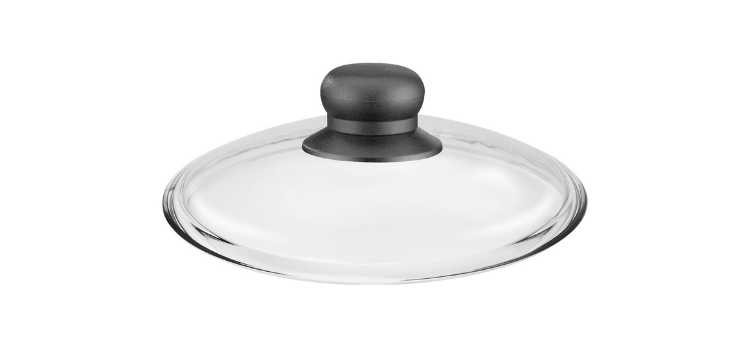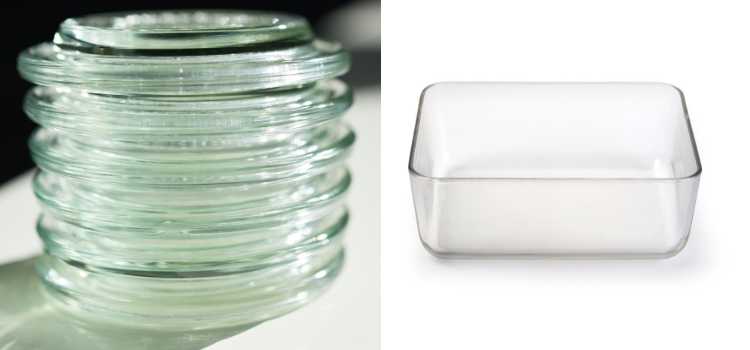As an Amazon Associate, I earn from qualifying purchases

Glass cookware, especially lids, have become a staple in many kitchens due to their transparency and durability. Unlike metal lids, glass lids allow you to monitor your cooking without lifting the lid and letting steam escape.
However, understanding whether these lids can transition safely into the oven is crucial for both safety and culinary success. This guide explores the complexities of using glass lids in the oven, helping you avoid kitchen mishaps and protect both your cookware and the quality of your food.
Types of Glass Lids
The first step in determining if a glass lid is oven-safe is understanding its composition. There are primarily two types of glass used in cookware: tempered and non-tempered glass.
- Tempered Glass: This type of glass is treated with heat and chemicals to increase its strength. It is designed to break into small, less dangerous pieces if shattered, making it a safer choice for cookware. Tempered glass is commonly used in lids due to its ability to withstand higher temperatures and sudden temperature changes, which is ideal for oven use.
- Non-Tempered Glass: Although less common in cookware, non-tempered glass is not treated to enhance its durability or heat resistance. It is more prone to shattering and is generally not recommended for oven use. Understanding the type of glass your lid is made from is critical before considering it for oven use.
Factors Determining Oven Safety
Several factors contribute to whether a glass lid can be safely used in the oven:
- Heat Resistance Levels: Tempered glass is generally more heat-resistant than non-tempered glass. Always verify the heat tolerance level of your glass lid, which is usually indicated by the manufacturer.
- Thickness and Construction Quality: A thicker lid may handle heat better, but its construction quality, including how evenly it is tempered, also plays a vital role in its ability to withstand oven temperatures.
- Presence of Metal or Plastic Components: Glass lids often come with metal or plastic handles. Ensure that these materials are oven-safe. Metal is typically safe, but plastic components may not withstand high temperatures unless specifically designed for oven use.
Manufacturer Guidelines

Before using a glass lid in the oven, consult the manufacturer’s guidelines. Many products come with specific instructions regarding oven use:
- Product Labels: Check for labels indicating oven safety and maximum temperature limits. This information is crucial for preventing accidents.
- Warranty and Safety Instructions: Understanding the warranty can give insights into what the manufacturer deems safe use. Safety instructions often include vital tips for proper handling and maintenance.
- Contacting Manufacturers: If you’re uncertain about your lid’s oven safety, reaching out to the manufacturer can provide clarity. They can offer specific advice based on the product’s design and materials.
Potential Risks and Precautions
Using glass lids in the oven can pose risks, predominantly due to thermal shock, which occurs when the glass experiences a rapid temperature change.
- Risk of Shattering: Sudden exposure to high temperatures or quick transitions from cold to hot environments can cause glass lids to shatter. Always preheat the oven to the desired temperature before placing the glass lid inside.
- Avoiding Sudden Temperature Changes: Allow the lid to cool down slowly after oven use. Avoid placing it directly on cold surfaces or exposing it to cold water immediately after removal from the oven.
- Recognizing Signs of Wear and Tear: Regularly inspect your glass lid for signs of damage such as chips or cracks, which can weaken the glass and increase the risk of shattering.
Tips for Safe Use
To safely use glass lids in the oven, follow these practical tips:
- Gradual Temperature Increase: When cooking, allow the oven temperature to rise gradually to avoid shocking the glass.
- Placement in the Oven: Position the lid in a way that avoids direct contact with heating elements. Use a middle rack to ensure even heat distribution.
- Suitable Temperature Limits: Adhere to any specified temperature limits provided by the manufacturer. Typically, tempered glass can withstand temperatures up to 425°F (220°C), but this can vary.
Alternative Options
If you’re hesitant to use glass lids in the oven, consider alternative oven-safe options:
- Oven-Safe Cookware and Lids: Look for cookware specifically labeled as oven-safe, including metal or silicone lids designed to withstand high temperatures.
- Different Materials for Cooking Lids: Metal lids are a reliable alternative, often able to handle higher temperatures and rapid temperature changes better than glass.
Conclusion
While glass lids can offer the convenience of monitoring your cooking without lifting the lid, their use in the oven requires careful consideration. By understanding the type of glass, following manufacturer guidelines, and taking necessary precautions, you can safely and effectively use glass lids in your culinary endeavors.
Prioritize safety by adhering to recommended practices, ensuring a successful and enjoyable cooking experience. Whether sticking with glass or exploring alternatives, informed decisions will help you achieve the best results while keeping your kitchen safe.
FAQ
How do I know if my glass lid is oven safe?
Check the manufacturer’s instructions or labels on your glass lid for oven safety details. Look for specifications indicating temperature limits and oven suitability. If unclear, contact the manufacturer directly for confirmation to ensure safe usage in your oven.
Can you put glass tops in the oven?
Yes, but only if they are labeled as oven-safe. Ensure your glass top can withstand high temperatures by checking its material and manufacturer guidelines. Avoid lids with non-heat-resistant components like plastic handles, unless specified otherwise, to prevent damage or accidents.
How hot can a glass lid be in the oven?
Typically, oven-safe glass lids can handle temperatures up to 425°F (220°C), but this can vary. Always refer to the manufacturer’s guidelines for specific temperature limits to avoid the risk of shattering or damage due to excessive heat.
Can a glass lid break from heat?
Yes, a glass lid can break from sudden temperature changes or exceeding its heat tolerance. To prevent this, avoid rapid transitions from cold to hot environments, and adhere to the recommended temperature limits provided by the manufacturer for safe usage.
As an Amazon Associate, I earn from qualifying purchases